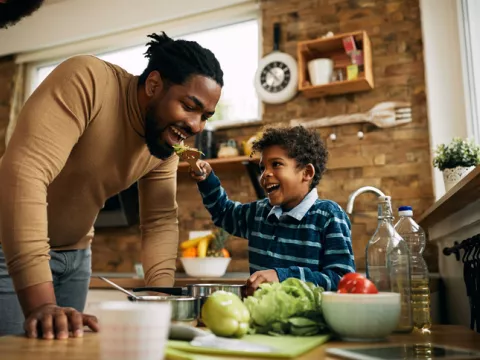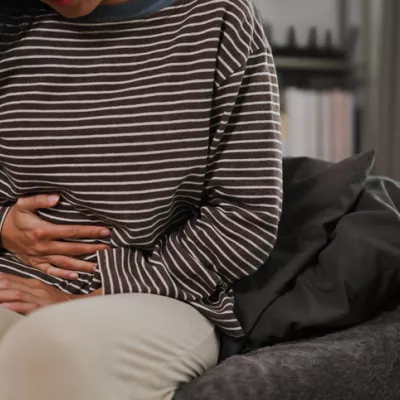- AdventHealth Whole Health Institute

Whole-person integrative medicine focused on healing you in mind, body and spirit. It's more than fixing what’s wrong. It’s about celebrating what’s right and making sure you’re on the path to a healthier, stronger you.
Cancer is a devastating diagnosis we hope never to receive. About 1.8 million Americans, however, are diagnosed with cancer every year, and 600,000 Americans died from cancer in 2020.
When developing a disease like cancer or heart disease, we first tend to blame our genes; however, lifestyle and environment play a much larger role.
For instance, when one of a pair of identical twins develops breast cancer, the likelihood of the other twin developing breast cancer is about 20 percent.
Similarly, when people move to another country, their risk factor for most chronic diseases are determined not by their country of origin but more by the country they move to as well as the new lifestyle they adopt. The influence of the new home on their health gets stronger over time and is even more pronounced in their children and grandchildren. For example, third-generation Asian-American women have a 50 percent higher risk of developing breast cancer than their parents and those who have lived in the West for more than a decade have an 80 percent higher risk than those who moved more recently.
Tobacco use accounts for 25 to 30 percent of cancer deaths, while diet is to blame for an estimated 30 to 35 percent of cancer deaths, and obesity is associated with about 40 percent of cancers. These statistics offer a big opportunity for prevention.
Up to 10 percent of cancers are associated with radiation exposure and electromagnetic fields such as ultraviolet light, living in proximity to high power lines, exposure to x-rays and CT scans, as well as radon and radioactive fallout from nuclear disasters like Chernobyl.
Another significant proportion of cancers is due to environmental pollution (indoor and outdoor air pollution, pesticides, nitrates and other food additives or contaminants), carcinogenic metals like asbestos and endocrine disruptors such as phthalates or biphenol A in plastic containers, plastic food wraps and toys.
Approximately 18 percent of cancers worldwide are associated with infections, such as liver cancer from hepatitis B and C, Epstein Barr virus and lymphoma, or human papillomavirus (HPV) and cervical cancer.
It’s worth noting that powerful inherited genetic mutations like BRCA cause only about 5 to 10 percent of all cancers. Most people in this category are likely aware of their situation due to family history.
So, what can we do to lower our risk of cancer?
The simple answer is to not smoke, maintain optimal weight, minimize toxin exposure, promote clean energy and non-toxic farming/food production, and most importantly, eat a healthy diet.
Many plants, mushrooms and spices help us reduce risk thanks to bioactive compounds that interact with our DNAs increasing expression of genes that are protective and dial down those that are not desirable.
Lycopene, one of the main carotenoids found in tomatoes, pink grapefruit, apricots and watermelon, helps to prevent cancer through its antioxidant and detoxification-boosting effect. Tomato-based products account for 85% of dietary lycopene. I add diced tomatoes to almost any stew. Poulet Basque, tomato feta cheese soup and and stuffed peppers are my favorite lycopene-rich delicacies.
Sulforaphane, the compound created in our body by eating cruciferous vegetables such as broccoli, cabbage, Brussels sprouts, kale, arugula and watercress, is a star among compounds boosting our ability to detoxify numerous carcinogens, increase antioxidant production, and put a dent in systemic inflammation.
Other anti-cancer compounds are resveratrol, found in the skin of red grapes, berries and peanuts; quercetin, found in apples, onions and capers; and sulfur compounds in garlic. But some of the most powerful anti-cancer compounds are in your spice rack: turmeric and ginger (both should be used frequently, if not daily), red chili, rosemary, cloves, cinnamon, coriander, cumin and fennel.
The best anti-cancer dietary strategy is eating a low glycemic-index diet (one that does not spike sugar and thus insulin), diversity of colors (just not from M&Ms), plenty of fiber, avoiding processed meats and alcohol, and occasionally fasting. Check with your physician first, though, to make sure fasting is safe for you.
Have a daily routine to help you deal with stress. Stress and inadequate sleep suppress our immune system and make us more susceptible to cancer as well as infections and heart disease.
Finally, do not forget to exercise at least 150 minutes per week. Being sedentary is as bad for you as smoking a pack of cigarettes per day.
The next-best strategy to cancer survival is early detection. That is why mammograms and colonoscopies can save your life. Cancer detected at an early stage is much easier to treat. Sadly, due to the Coronavirus pandemic, many people skipped their routine cancer screening over the past year. It is estimated that 10,000 more people will die from colon or breast cancer because of delayed diagnosis. Do not let that be you.



